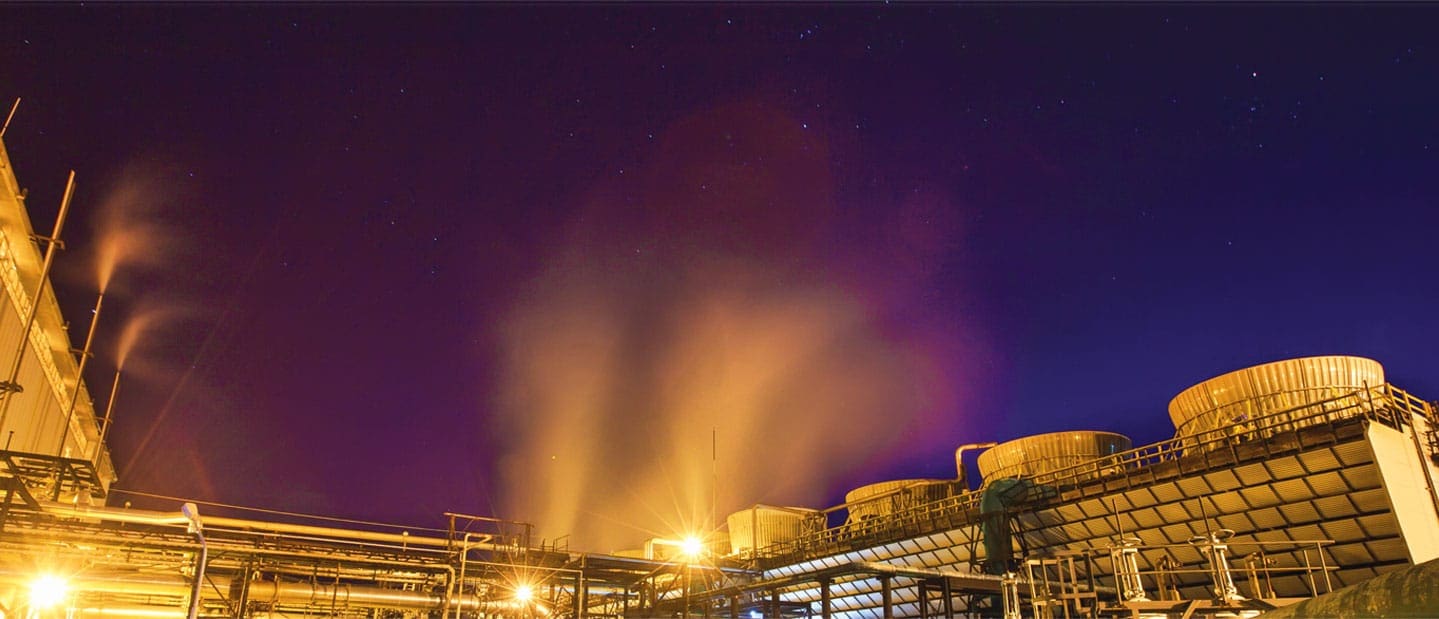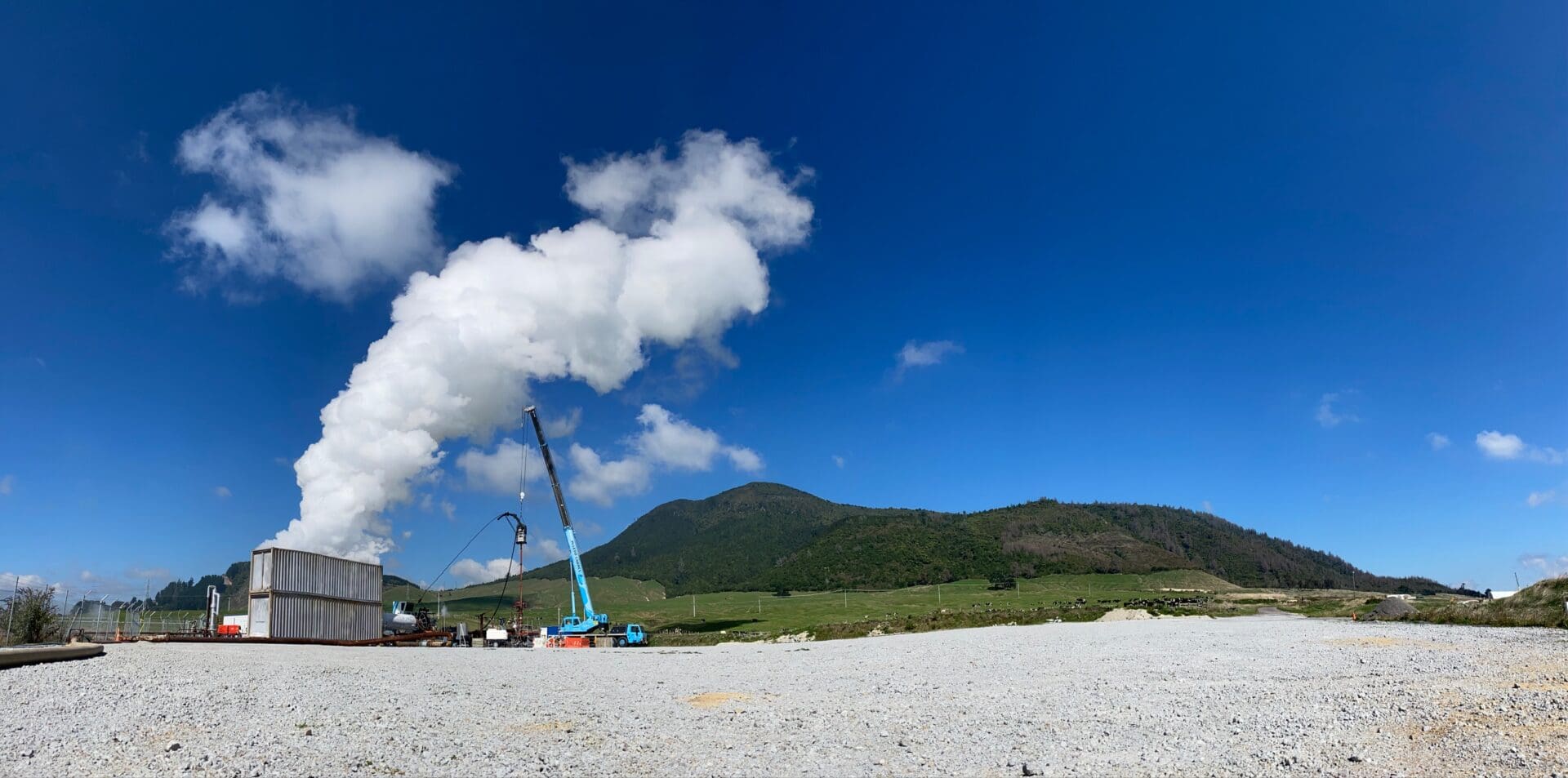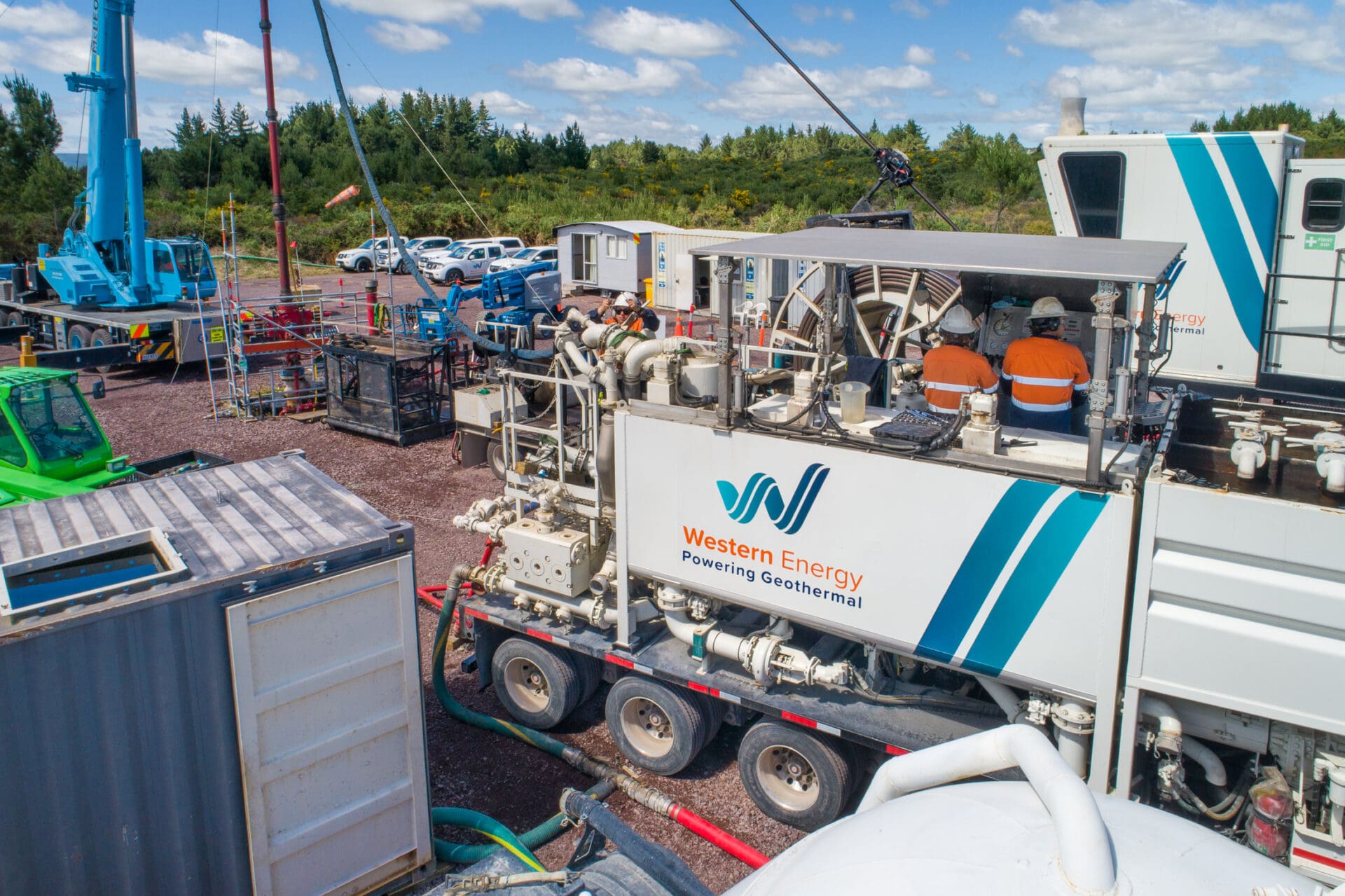
CASE STUDY Revolutionising Geothermal Well Interventions
Reducing Well Workover Time from 42 Days to 3 with Live Well Cleanouts and Coiled Tubing Hammer Technology
CLIENT Contact Energy
LOCATION Geothermal Fields in Taupō Region, New Zealand
Objectives
To significantly improve the efficiency and reduce the downtime of geothermal well interventions by implementing advanced coiled tubing hammer technology, enabling live well cleanouts without quenching.
Challenges
Traditional rig-based workovers are time-intensive, requiring up to 42 days of operation from mobilisation to demobilisation, leading to extended downtime for the well and increased operational costs.
Results
Implemented live well cleanouts using coiled tubing hammer technology, reducing workover time to an average of 3 days and restoring wells to maximum flow rates without the need for quenching. Intervention of over 100 geothermal wells in New Zealand has been completed.
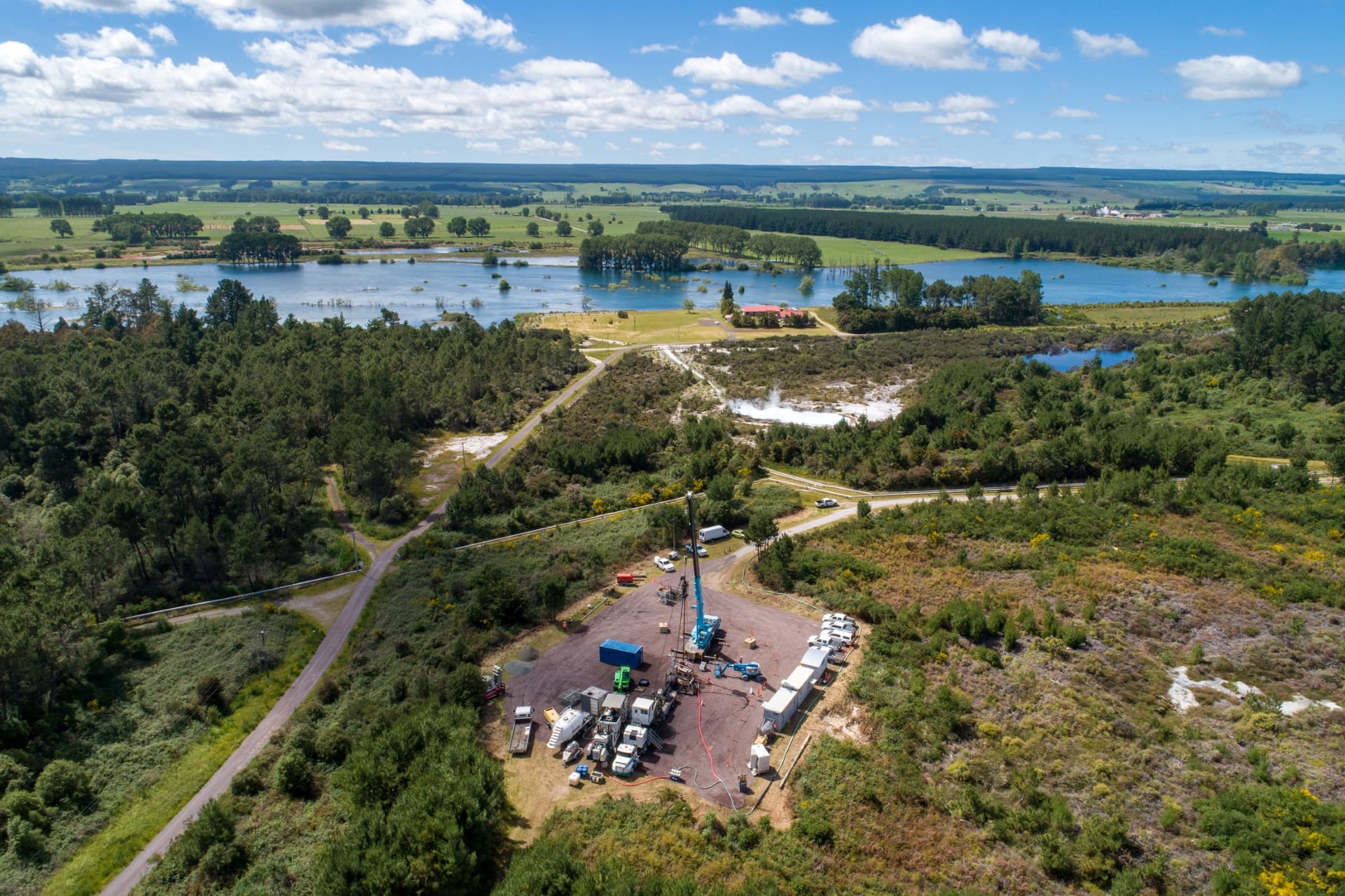
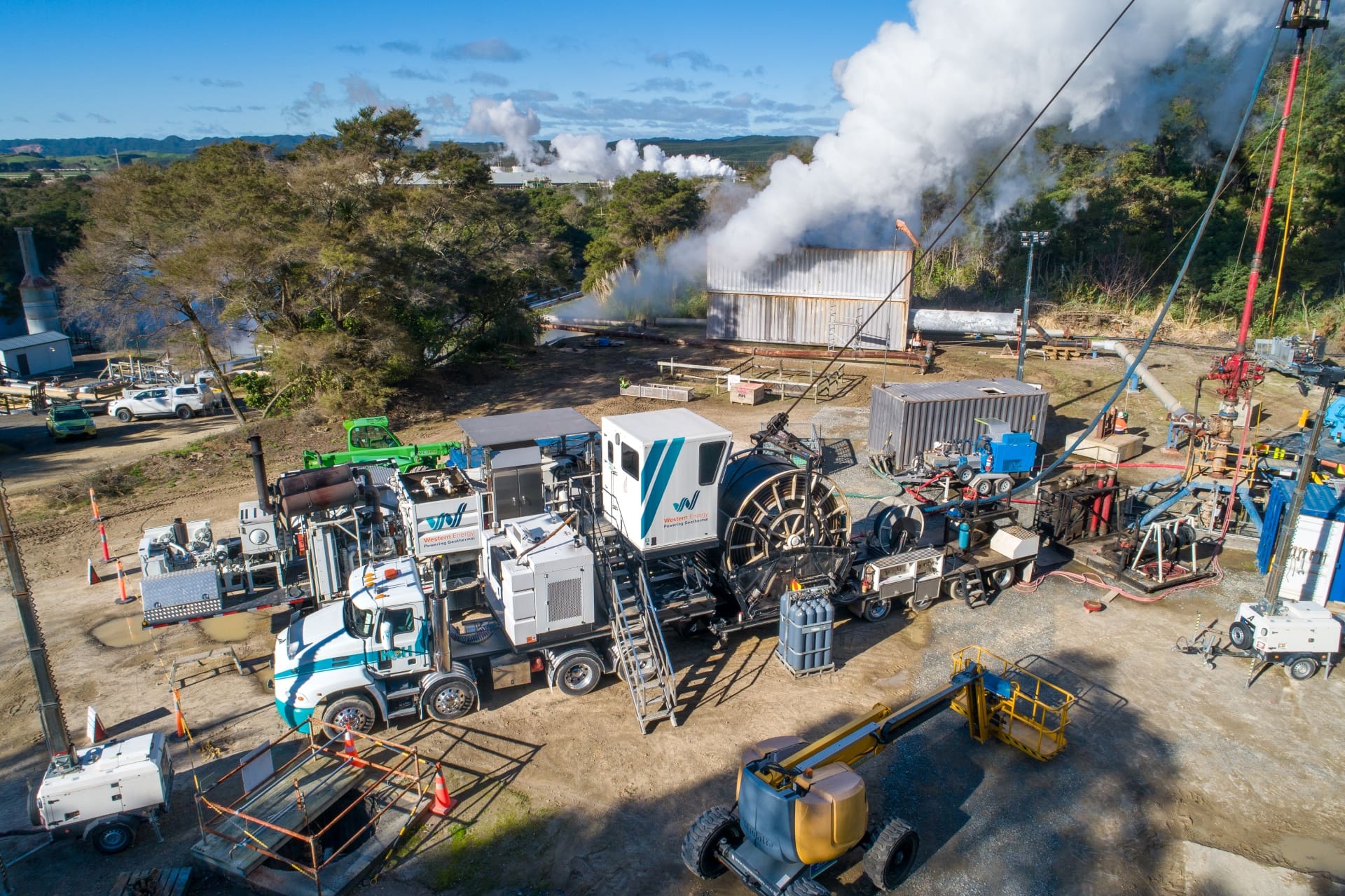
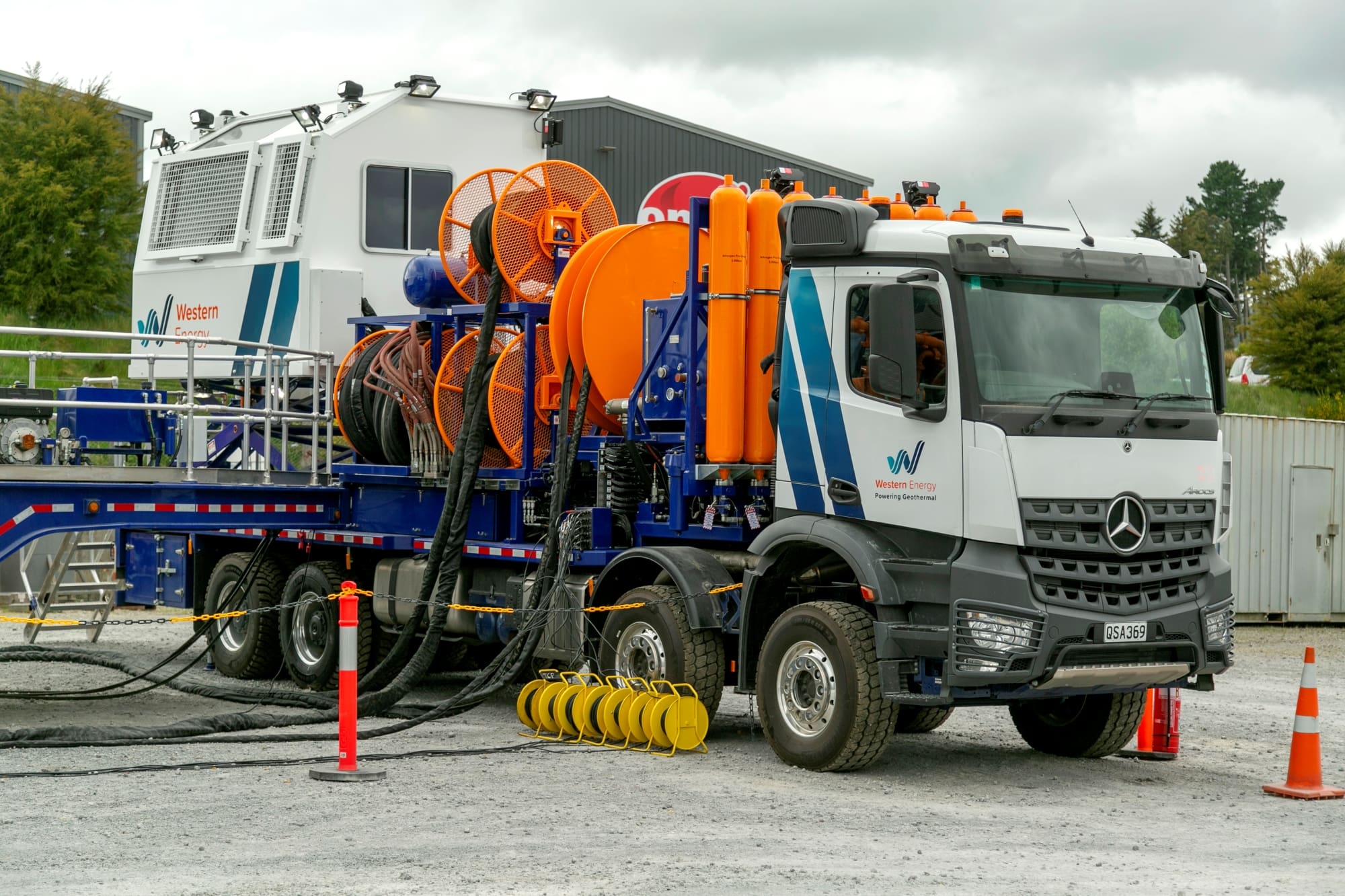
KEY EQUIPMENTCoiled Tubing Hammer
A cutting-edge tool designed specifically for live well cleanouts in geothermal environments. This equipment enables precise mechanical cleaning while the well remains flowing, avoiding the need for quenching. Its robust design and real-time adaptability ensure efficient removal of mineral scale, restoring wells to peak performance with minimal disruption.
The Project
Geothermal wells can suffer from mineral scale buildup, which reduces their internal diameters and impedes flow rates. The conventional method to address this issue involves rig-based workovers, a process that can take approximately 42 days and requires quenching the well, resulting in significant operational downtime and increased costs. There was a pressing need for a more efficient intervention method that could minimise downtime and restore well performance effectively.
Western Energy, in partnership with Contact Energy, initiated a phased well intervention project to address this challenge. The project began with a comprehensive review of well data and an assessment of intervention technologies to recommend the most suitable approach.
Phase 1 // Well Data Review & Intervention Technology Assessment:
We gather critical well data, identify gaps, and assess well integrity. Based on this, we recommend the best-fit intervention technologies.
Phase 2 // Well Intervention Program Development:
Risk assessments, job program, logistics, and cost estimates are specifically planned and reviewed.
Phase 3 // Execution:
The intervention program is performed by experienced manpower and using the appropriate equipment. This includes daily reporting, and a comprehensive post job report.
This approach allowed for precise identification of mineral scale zones and targeted mechanical cleaning of the wellbore while the well remained flowing, thereby eliminating the need for quenching and significantly reducing the operation time.
As a result of this innovative intervention method, Western Energy successfully completed over 100 mechanical cleanouts. The live well cleanouts reduced downhole operation time to as little as 5 hours, with an average total workover time of 3 days on site, including rig up and rig down. This represents a substantial improvement over the traditional 42 day rig-based workover process.
The mechanical cleaning restored the casings to their maximum internal diameters, enabling the wells to return to their maximum flow rates. The combination of precise diagnostics and targeted cleaning ensured maximum efficacy of the workovers, leading to increased operational efficiency and significant cost savings.
Keen to drill deeper?
Download the full case study PDF to see how it all came together.
LEVERAGE OUR WELL INTERVENTION EXPERTISEDiscuss Your Specific Needs With Us
From meticulous maintenance activities to recovery and enhancement solutions, our state-of-the-art Well Intervention Services are tailored to tackle your geothermal challenges head-on.
Whether you’re dealing with routine upkeep or need specialised modifications, our well intervention techniques stand ready to ensure smooth and effective operations.
Fill out the form, and one of the team will contact you soon.

